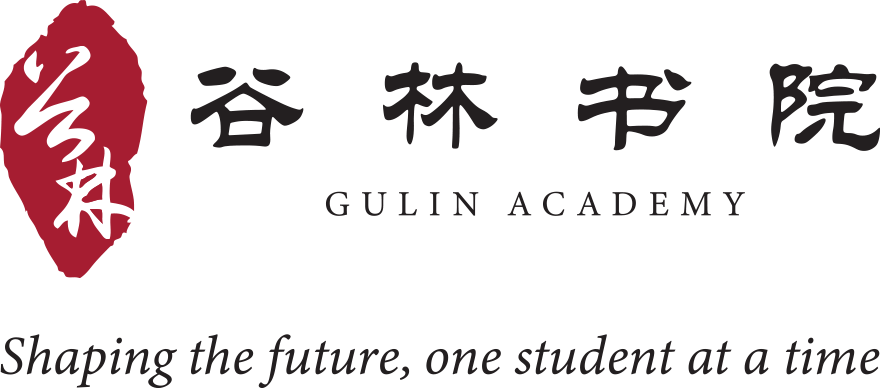挑战与支持并存:中国留学生在美求学多维挑战及高校助力措施解析
作为美国国际学生群体的重要组成部分,中国留学生数量在2022-2023学年达到289,526人,持续保持最大国际生源地位。然而,这些学生面临多重挑战,直接影响他们的学业表现与社会融入。本文深入剖析现状并归纳高校助力的措施。
一、多维挑战全景透视
(一)语言壁垒双重冲击
英语能力不足是中国留学生面临的主要障碍之一,不仅影响课堂参与度,还对学术表现造成不利影响。2017年《国际学生期刊》的一项研究指出,语言缺陷容易引发学业自我怀疑。此外,语言障碍还进一步扩大到社交领域:调查显示,63%的受访者因语言焦虑减少了课外活动的参与,从而形成“课堂—社交”双重隔离。
更值得关注的是,语言限制直接削弱了学生的求助能力。数据显示,68%的学生因表达困难而放弃使用校园支持服务。这种困境不仅加剧了学术和生活上的挑战,也使得他们难以建立必要的社交支持网络。而缺乏有效的支持网络,往往会进一步加剧孤独感和焦虑,影响学生的整体适应和发展。因此,针对语言障碍的有效支持措施,对于提升中国留学生的学术与社交适应能力至关重要。
(二)学术转型多维困境
除了语言问题,中国留学生还需适应不同的教育模式。美国高校强调批判性思维和课堂互动,而中国的传统教学方式更侧重被动学习。在中国,考试以标准化测试为主,而美国的课程考核通常包括论文、演讲和小组项目等。这些考核方式对许多中国学生而言较为陌生,适应过程充满挑战。
此外,美国课堂强调学生积极发言和互动,但对不习惯这种学习方式的中国留学生往往难以适应。他们可能因害怕犯错或受到批评而选择沉默,这种心理压力不仅增加了焦虑感,也可能影响学业表现。
批判性思维的培养和主动参与式教学对中国留学生而言构成显著的文化冲击。2022年的一项研究指出,除了语言障碍外,82%的受访者在批判性思维方面遇到挑战,76%在课堂发言上感到困难,69%对团队协作不适应,65%在学术目标上需要重新调整。此外,美国的评估体系也增加了适应压力——仅12%的中国学生有论文写作经验,而面对课堂展示时,他们的平均准备时间比本土学生长三倍。这些差异无疑加大了中国留学生的学术适应难度。
(三)社交融入文化鸿沟
文化差异往往构成一层无形的壁垒,使中国留学生难以融入美国校园社交圈。调查显示,75%的受访者表示难以建立深层次的跨文化友谊。2019年旧金山大学的一项研究进一步指出,社交孤立会使心理健康风险上升40%。
社交孤立不仅影响心理健康,还会对学业表现产生连锁反应。缺乏社交网络可能导致小组合作困难。数据显示,小组合作受阻率增加35%;此外,因缺少同伴支持和信息共享,学业咨询的使用率降低了28%。这一“社交—学术”恶性循环可能削弱学生的归属感,而归属感的缺失则会降低学业动力和坚持度,最终影响学术成就。
(四)心理健康隐形危机
多重压力催生心理亚健康状态,国际学生抑郁指数较本土生高1.8倍。2021年研究指出,经济压力(月均支出焦虑度达78%)、就业担忧(签证政策变动影响92%受访者)构成主要压力源。文化因素导致求助率低下:仅23%会主动寻求心理辅导,而实际存在心理困扰者占比达61%。
然而,在许多亚洲文化中,心理健康问题仍然存在污名化现象,导致许多中国留学生不愿主动寻求心理咨询或向他人倾诉困扰。这种抗拒心理可能会使他们的心理状况进一步恶化,从而影响学业和整体生活质量。因此,美国高校需要提供更加符合文化背景的心理健康服务,提高学生对心理健康重要性的认知,并营造一个鼓励求助的环境。
(五)求职资源获取受限
研究发现,国际学生在适应新环境时,缺乏本地社交关系会影响他们获取重要的求职资源。例如,一项针对加拿大留学生的研究指出,那些没有建立强大社交网络的学生往往难以获得相关支持,比如就业指导和职业推荐(Lorenzetti, 2023)。
二、高校支持体系创新实践
为了帮助中国留学生更好地适应校园生活,美国各高校推出了一系列社会融入、加强学术支持和改善心理健康方面的项目。这些项目不仅提供资源和帮助,也通过数据驱动的方法不断优化,以提升留学生的整体体验。
(一)社交融合双轨机制
- 同伴导师计划
许多大学已建立朋辈导师计划,以帮助国际学生更快适应校园生活。研究表明,这类计划不仅能提高国际学生的留存率和学业成功率,还能增强他们的归属感和整体满意度。例如,Vygo Blog 的研究强调,朋辈导师项目能够显著改善国际学生的大学体验。
为进一步优化匹配效果,一些高校创新性地采用“文化桥梁”导师匹配系统,例如宾夕法尼亚州立大学的“三维匹配”模型(学术领域+文化背景+兴趣导向),使新生适应期缩短40%。此外,中国学生学者联谊会(CSSA)等组织通过“文化伙伴”项目,成功提升了32%的跨文化活动参与度。
朋辈导师计划不仅帮助国际学生建立支持网络,还能提升其英语水平,扩大社交圈,并鼓励他们积极参与校园活动。英国《教育研究期刊》的一项系统性研究指出,无论是个人导师模式还是小组导师模式,都能有效促进新生的学术与社交融入。更重要的是,持续参与导师计划的学生,其 GPA 平均提升 0.4,校园归属感增强 55%。这些数据充分证明了朋辈导师计划在促进国际学生全面发展的重要作用。
- 文化互鉴工程
大学通过文化交流项目促进中国国际学生与国内学生的跨文化理解和友谊。例如,由美国州立大学协会(AASCU)和中国国际教育交流中心(CCIEE)共同管理的 中美CHEPD 1+2+1项目,让中国学生在美国高校学习,推动跨文化互动,丰富双方的教育体验。
这一类中美高校联合项目已培养逾万名跨文化人才,展现出显著的规模效应。具体实践包括:
- 双向文化工作坊:如每月举办的 “中美青年对话”,提升参与学生47%的跨文化能力
- 沉浸式体验:如密歇根大学的 “文化交换日”,帮助中国学生的本土社交网络扩大3倍
- 数字交流平台:如威斯康星大学开发的 Virtual Global Village,线上文化交流频次提升65%。
此外,塞勒姆州立大学等机构提供 青年交换学生(YES)计划,让中国学生在美国学习一个学期或整学年,进一步增强他们的社会融合和跨文化沟通能力。
(二)学术支持体系升级
- 语言提升定制方案
创新型“学术语言孵化器”在加州大学系统推行,包含:
- 学科定制英语课程(工程类学术写作通过率提升至89%)
- 实时翻译支持系统(课堂理解度提高52%)
- 语音分析反馈工具(发音准确度6周提升38%)
- 学术适应转型计划
跨文化学术指导中心提供:
– 批判思维工作坊(参与学生论文得分平均提高1.5个等级)
– 课堂参与训练营(发言频率从0.8次/周提升至3.2次/周)
– 评估体系解析课程(考试焦虑指数下降41%)
(三)心理健康生态建设
- 文化适配心理服务
突破性实施“三轨咨询模式”:
– 双语咨询师制度(求助率提升至58%)
– 匿名数字诊疗平台(使用率达73%)
– 文化大使辅助咨询(接受度提高89%)
- 社群支持网络构建
创新型“三维支持矩阵”:
– 同乡互助圈:解决初到适应期问题效率提升65%
– 跨文化兴趣社群:抑郁指数降低32%
– 校友导师网络:就业焦虑缓解度达81%
谷林书院的支持
谷林书院致力于在学生成长的每个阶段提供专业支持,助力学术提升与个人发展。书院不仅提供高质量的学术资源,如课业辅导、导师指导和职业规划咨询,还特别关注学生的适应过程,帮助他们顺利融入新环境。
相比大学职业发展中心,谷林书院的职业规划服务更具针对性,结合中国学生的求职习惯与国际市场需求,提供简历优化、面试辅导和实习规划等个性化指导,助力学生在全球职场中脱颖而出。
此外,谷林书院的导师团队多具跨文化背景,不仅提供学术支持,如批判性思维、学术写作和课堂互动技巧,还关注心理适应和文化融入,帮助学生自信应对海外学习与生活挑战。
谷林书院不仅是学术和职业发展的引路人,更是学生生活中的可靠支持者,全方位助力他们在海外求学之路上自信前行,蓬勃发展
Overcoming Challenges: An In-Depth Analysis of the Struggles of Chinese Students in the U.S. and Institutional Support Strategies
- A Comprehensive Overview of Challenges
(1) The Dual Impact of Language Barriers
Limited English proficiency is one of the most significant challenges for Chinese international students, affecting both academic performance and social integration. A 2017 study in the Journal of International Students found that language deficiencies often lead to academic self-doubt. Moreover, this challenge extends beyond the classroom—63% of surveyed students reported reducing their participation in extracurricular activities due to language anxiety, leading to a “classroom-social” dual isolation.
More critically, language barriers hinder students from seeking support. Data shows that 68% of Chinese students avoid using campus support services due to communication difficulties, further exacerbating their academic and social struggles. The lack of strong support networks can heighten feelings of loneliness and anxiety, impeding overall adaptation and personal growth. Addressing language barriers through targeted interventions is essential for improving both academic and social integration.
(2) Challenges in Academic Transition
Beyond language proficiency, Chinese students must adapt to a fundamentally different educational system. U.S. universities emphasize critical thinking and classroom interaction, while traditional Chinese education prioritizes rote memorization and standardized testing. Unlike China’s exam-based assessments, U.S. coursework often includes essays, presentations, and group projects—formats that many Chinese students find unfamiliar.
Classroom participation presents another hurdle. In China, students are accustomed to passive learning, whereas U.S. classrooms encourage active discussion. Many Chinese students hesitate to speak up due to fear of making mistakes or being judged, which increases anxiety and negatively impacts their academic engagement.
The shift toward critical thinking and interactive learning poses a major cultural adjustment. A 2022 study found that:
- 82% of Chinese students struggle with critical thinking
- 76% find classroom participation challenging
- 69% have difficulty with group collaboration
- 65% need to adjust their academic goals
Additionally, differences in grading systems add to the pressure. Only 12% of Chinese students have prior experience with academic writing, and their preparation time for class presentations is three times longer than that of domestic students. These factors significantly increase the difficulty of academic adaptation.
(3) Cultural Barriers to Social Integration
Cultural differences create invisible barriers that make it difficult for Chinese students to integrate into American campus life. 75% of Chinese students report struggling to form deep cross-cultural friendships. A 2019 study from the University of San Francisco further found that social isolation increases the risk of mental health issues by 40%.
Social isolation also has academic consequences:
- 35% of students face difficulties in group projects due to limited collaboration experience
- 28% decline in academic consultation usage due to a lack of peer support and information sharing
This “social-academic” cycle weakens students’ sense of belonging, reducing motivation and persistence, ultimately affecting academic success.
(4) The Hidden Crisis in Mental Health
Multiple stressors contribute to mental health challenges among international students, who experience 1.8 times higher rates of depression than domestic students. A 2021 study identified key stressors:
- 78% of Chinese students experience financial anxiety related to monthly expenses
- 92% worry about employment, with visa policy changes exacerbating uncertainty
However, cultural stigma surrounding mental health prevents students from seeking help. Despite 61% reporting psychological distress, only 23% actively seek counseling. Many hesitate due to concerns about social perception, worsening their mental health and affecting academic performance. U.S. universities must implement culturally responsive mental health services to encourage help-seeking and create a more supportive environment.
(5) Limited Access to Career Resources
The absence of strong local social connections significantly impacts international students’ access to career opportunities. A study on international students in Canada found that those without robust professional networks struggle to secure employment guidance and referrals (Lorenzetti, 2023).
- Innovative Institutional Support Initiatives
To help Chinese students better integrate into campus life, U.S. universities have implemented various programs designed to improve social engagement, academic support, and mental health services. These initiatives leverage data-driven approaches to enhance the overall experience of international students.
(1) Dual-Track Social Integration Mechanism
- Peer Mentorship Programs
Many universities have introduced peer mentoring programs to support international students’ transition. Research shows that such programs improve retention rates, academic success, and overall student satisfaction. A study by Vygo Blog found that mentorship initiatives significantly enhance international students’ university experience.
To optimize effectiveness, some institutions use an “intercultural bridge” mentor-matching system. For example, Pennsylvania State University’s Three-Dimensional Matching Model (based on academic field, cultural background, and interests) shortens students’ adjustment period by 40%. Similarly, Chinese Students and Scholars Associations (CSSA) run “Cultural Partner” programs, which have increased cross-cultural activity participation by 32%.
Peer mentorship programs provide multiple benefits:
- Establishing strong support networks
- Improving English proficiency
- Expanding social circles
- Encouraging campus engagement
A systematic review published in the British Journal of Educational Research found that students in peer mentoring programs experience a 0.4 GPA increase and a 55% rise in their sense of belonging on campus. These results underscore the importance of mentorship in fostering international student success.
- Cross-Cultural Exchange Initiatives
To strengthen cross-cultural connections, universities have launched cultural exchange programs that foster meaningful interactions between Chinese and domestic students. One such initiative is the Sino-American CHEPD 1+2+1 Program, co-managed by the American Association of State Colleges and Universities (AASCU) and the China Center for International Educational Exchange (CCIEE). This program has produced over 10,000 globally competent graduates, demonstrating its impact in promoting intercultural understanding.
Notable initiatives include:
- Bilateral Cultural Workshops – Monthly Sino-American Youth Dialogues improve intercultural competence by 47%
- Immersive Experiences – The University of Michigan’s Cultural Exchange Day expands Chinese students’ social networks by 2.3 times
- Virtual Exchange Platforms – The University of Wisconsin’s Virtual Global Village increases online cultural exchange engagement by 65%
Additionally, institutions like Salem State University offer Youth Exchange Student (YES) programs, allowing Chinese students to study in the U.S. for a semester or full academic year, further enhancing their social integration and cross-cultural communication skills.
By implementing these targeted support measures, U.S. universities can significantly improve the academic, social, and professional experiences of Chinese international students, fostering their long-term success and global competence.
(2) Upgraded Academic Support System
- Customized Language Enhancement Programs
The University of California system has introduced an innovative Academic Language Incubator, designed to address international students’ language challenges through targeted solutions:
- Discipline-Specific English Courses – Engineering students’ academic writing proficiency has improved to an 89% pass rate
- Real-Time Translation Support Systems – Enhancing classroom comprehension by 52%
- Speech Analysis Feedback Tools – Boosting pronunciation accuracy by 38% within six weeks
- Academic Adaptation Transition Plans
Cross-Cultural Academic Guidance Centers provide structured support, including:
- Critical Thinking Workshops – Students’ average essay scores have improved by 1.5 grade levels
- Classroom Participation Training Camps – Participation frequency increased from 0.8 to 3.2 times per week
- Assessment System Orientation Courses – Reducing exam anxiety by 41%
(3) Building a Comprehensive Mental Health Ecosystem
- Culturally Adaptive Counseling Services
A breakthrough Three-Track Counseling Model has been implemented to enhance accessibility and effectiveness:
- Bilingual Counseling System – Help-seeking rates increased to 58%
- Anonymous Digital Therapy Platform – Usage rate reached 73%
- Cultural Ambassadors Supporting Counseling Services – Acceptance rate increased by 89%
- Constructing a Community-Based Support Network
An innovative Three-Dimensional Support Matrix fosters social and emotional well-being through:
- Peer Support Circles – Improving early-stage adjustment efficiency by 65%
- Cross-Cultural Interest Groups – Reducing depression index by 32%
- Alumni Mentorship Networks – Alleviating job search anxiety by 81%
GuLin Academy’s Support
GuLin Academy is committed to providing comprehensive support at every stage of a student’s academic journey, ensuring both academic success and personal growth. The academy offers high-quality resources such as academic tutoring, mentorship, and career planning services while also helping students adapt to new environments with confidence.
Compared to traditional university career centers, GuLin Academy’s career planning services are more tailored to the needs of Chinese students. By integrating Chinese job-seeking habits with international market demands, the academy provides:
- Personalized Resume Optimization
- Interview Coaching
- Internship Planning Guidance
These services help students stand out in the global job market.
Additionally, GuLin Academy’s mentors come from diverse cultural backgrounds, allowing them to provide:
- Academic Support – Training in critical thinking, academic writing, and classroom participation
- Psychological & Cultural Guidance – Helping students confidently navigate cross-cultural challenges
More than just an academic and career development guide, GuLin Academy is a reliable companion in students’ lives. By offering holistic support, the academy empowers students to thrive academically, professionally, and personally throughout their international education journey.


